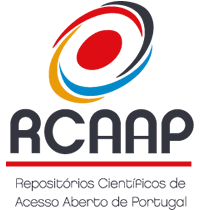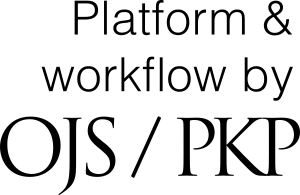Ivermectin decreases the expression of ALDH1 in ovarian cancer cell lines in combination with chemotherapy
DOI:
https://doi.org/10.48797/sl.2025.305Keywords:
PosterAbstract
Background: Cell Microarray (CMA) technology has been established as an essential tool for advancing cancer studies, allowing for the simultaneous protein analysis of multiple samples [1]. This method facilitates the exploration of various biomarkers associated with diagnosis, prognosis, and therapeutic response, making evaluation processes more efficient and comprehensive [1]. Carboplatin and paclitaxel are commonly used chemotherapy drugs for ovarian cancer treatment. Numerous studies have demonstrated that patients often develop resistance, underscoring the need to discover more effective therapeutic options to improve patient outcomes [2]. In oncology, drug repurposing has shown promising results in achieving this goal. Ivermectin, an antiparasitic drug, has been shown to enhance the efficacy of carboplatin and create a synergistic effect when combined with paclitaxel [3]. Aldehyde Dehydrogenase 1 (ALDH1) is an aldehyde catalyzer that plays a crucial role in drug metabolism. The study of this biomarker could be vital to the understanding of treatment resistance found in advanced ovarian cancer. Objective:Using the CMA approach, the aim is to explore the ALDH1 expression pattern in two ovarian cancer cell lines, after in vitro treatment with carboplatin, paclitaxel and ivermectin. Methods: Two ovarian cancer cell lines were used: OVCAR8, characterized by resistance to Carboplatin, and OVCAR8 PTX R C, which exhibits resistance to both Carboplatin and Paclitaxel [2]. The cells were exposed to chemotherapeutic agents for 48 hours, administered either alone or in combination with Ivermectin. After the incubation period, the cells were collected, formalin-fixed and embedded in Histogel®. Then the samples were paraffin-embedded and cut into glass slides to perform ALDH1 protein detection using immunocytochemistry. Results: In general, ALDH1 expression was found in the cytoplasm of the cells with a dot pattern. Our results show that in both OVCAR8 and OVCAR8 PTX R C cell lines, the treatment with the combinations of carboplatin/paclitaxel plus Ivermectin, whether in 2D or 3D environments, leads to a notable decrease in ALDH1 expression compared to treatments in monotherapy. Conclusions: High levels of ALDH1 are associated with chemoresistance. The low levels of ALDH1 found in ovarian cancer cells treated with Ivermectin plus carboplatin or paclitaxel reveal a more sensitive profile, which could be a promising alternative for ovarian cancer treatment. Figure 1.
Evaluation of ALDH1 expression in drug-treated cells. (1) Drug Treatment: OVCAR8 and OVCAR8 PTX R C cell lines were cultured in 6-well plates under 2D (flat) and 3D (spheroid or aggregate) culture conditions. Cells were incubated at 37 °C with 5% CO2 for 96 hours. After this period, the cells were treated with different drugs, both alone and in combination. After 48 hours of treatment, cells were harvested, fixed in formalin, and embedded in Histogel® for further analysis. (2) CMA: All treatment conditions from (1) were included in a single CMA block, allowing the analysis of multiple experimental conditions in one format. (3) Immunocytochemistry: ALDH1 expression in drug-treated cells was analyzed by immunocytochemistry using specific antibodies for ALDH1. Images show the distribution and intensity of ALDH1 expression in the treated cells, highlighting the effects of the treatments on the modulation of this protein expression. The figure was created with Biorender.com.
Figure 1.
Evaluation of ALDH1 expression in drug-treated cells. (1) Drug Treatment: OVCAR8 and OVCAR8 PTX R C cell lines were cultured in 6-well plates under 2D (flat) and 3D (spheroid or aggregate) culture conditions. Cells were incubated at 37 °C with 5% CO2 for 96 hours. After this period, the cells were treated with different drugs, both alone and in combination. After 48 hours of treatment, cells were harvested, fixed in formalin, and embedded in Histogel® for further analysis. (2) CMA: All treatment conditions from (1) were included in a single CMA block, allowing the analysis of multiple experimental conditions in one format. (3) Immunocytochemistry: ALDH1 expression in drug-treated cells was analyzed by immunocytochemistry using specific antibodies for ALDH1. Images show the distribution and intensity of ALDH1 expression in the treated cells, highlighting the effects of the treatments on the modulation of this protein expression. The figure was created with Biorender.com.
References
1. Nunes, M. et al. Cell Microarray: An Approach to Evaluate Drug-Induced Alterations in Protein Expression. Advancements in Cancer Research 2023, 133–44, doi: 10.36255/cell-microarray
2. Nunes, M. et al. Generation of Two Paclitaxel-Resistant High-Grade Serous Carcinoma Cell Lines With Increased Expression of P Glycoprotein. Front Oncol 2021, 11, 752127, doi: 10.3389/fonc.2021.752127
3. Nunes, M., Ricardo, S. Ivermectin Strengthens Paclitaxel Effectiveness in High-Grade Serous Carcinoma in 3D Cell Cultures. Pharmaceuticals 2024, 18(1), 14–4, doi: 10.3390/ph18010014
Downloads
Published
How to Cite
Issue
Section
License
Copyright (c) 2025 Cláudia Santos, Érica Oliveira, Sofia Ally, Mariana Nunes, Albina Resende, Sara Ricardo

This work is licensed under a Creative Commons Attribution 4.0 International License.
In Scientific Letters, articles are published under a CC-BY license (Creative Commons Attribution 4.0 International License), the most open license available. The users can share (copy and redistribute the material in any medium or format) and adapt (remix, transform, and build upon the material for any purpose, even commercially), as long as they give appropriate credit, provide a link to the license, and indicate if changes were made (read the full text of the license terms and conditions of use).
The author is the owner of the copyright.









